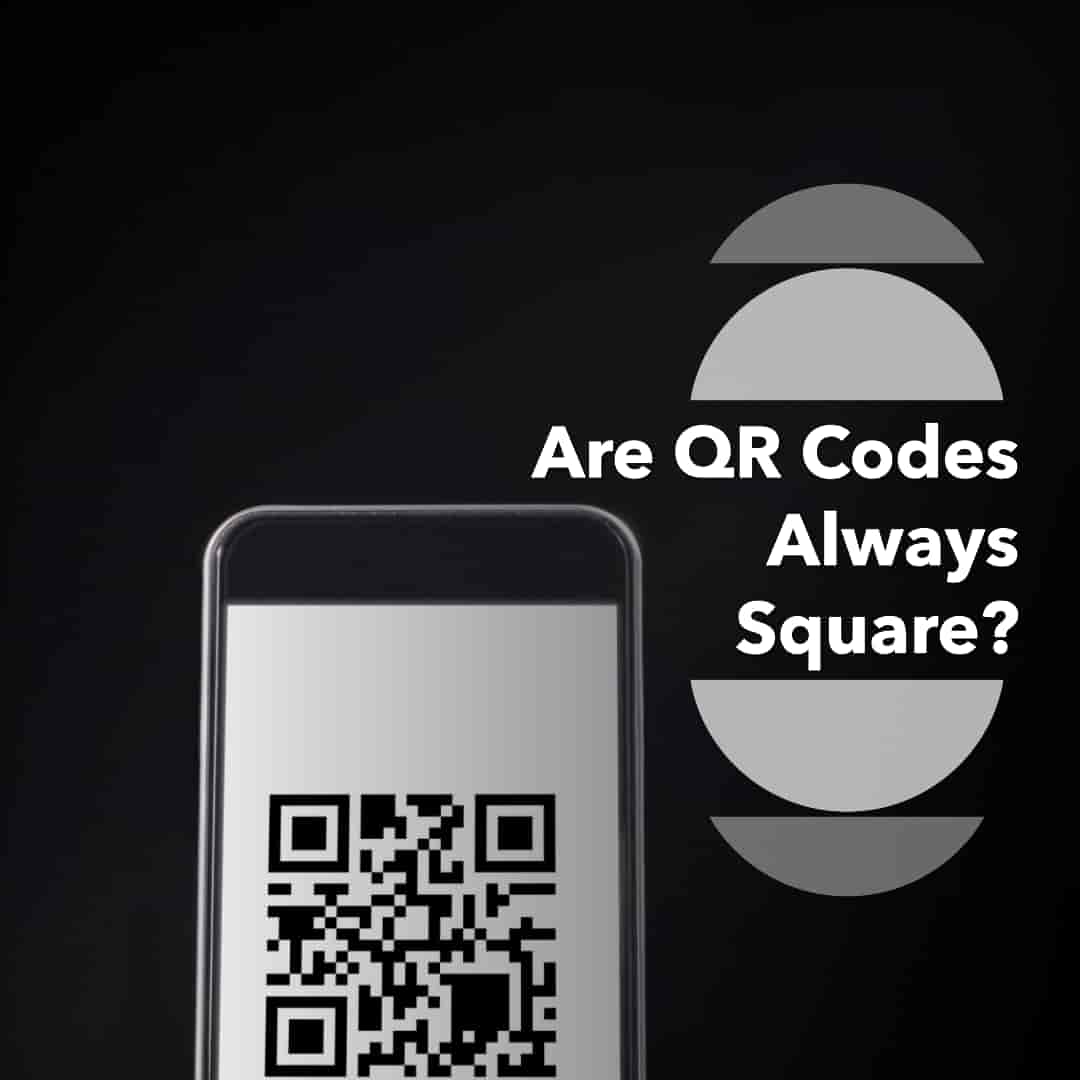QR codes have been everywhere recently. From restaurant menus to ticketing systems, these intriguing square patterns are being used as a bridge between the physical and digital worlds. But have you ever paused and wondered, "Are QR Codes always square?" Let's dive into the world of QR codes to find out.

The Geometry of QR Codes
Why the Square Shape?
-
Square QR codes are not merely a design choice; they're driven by purpose. Firstly, their symmetrical form allows for maximum data storage, outclassing other potential shapes in efficiency.
-
Secondly, scanners, optimized for the quintessential square, decode them with unparalleled ease regardless of orientation, ensuring a hassle-free user experience. This geometry, rooted in utility, makes them a globally trusted choice for data sharing.
Are There Exceptions?
While squares dominate the QR world, exceptions exist. Certain custom QR codes change the typical square appearance for branding or aesthetic reasons. For instance, some companies mold QR codes into shapes that resemble their logos, yet these are often built on the foundational square grid.
However, deviating too much from the original design can compromise the QR code's reliability. Scanners are optimized for square patterns, and anything too far from this can result in scanning issues.
Note: The International Organization for Standardization (ISO) provides guidelines on QR code standards, emphasizing the importance of their square shape for consistent scanning.
Benefits of Sticking to the Square
-
Universality: One of the key assets of square QR codes is their widespread recognition. A majority of QR code scanners, whether standalone devices or integrated mobile apps, are calibrated for the distinctive square shape. This universal design ensures that a QR code generated in one part of the world can be seamlessly scanned and deciphered anywhere else. It's this global interoperability that has cemented the square format as the industry standard, sidestepping potential barriers that might arise from diverse, non-standardized designs.
-
Data Density: The geometric efficiency of the square shape is not just for show. A square design allows for optimal data storage, layering data in a compact matrix. Simple data like URLs can be stored with plenty of room to spare, while more intricate details, like vCards with personal information, can fit snugly without overwhelming the design. According to ISO/IEC 18004, this ensures the QR code remains legible, even when packed with information. The square QR's ability to condense vast amounts of data into a small space is a technological marvel in the realm of information sharing.
Exploring Non-Square Designs
Indeed, the realm of QR code design isn't rigidly confined to square blueprints. Brands, ever keen on standing out, often infuse their unique identity into these codes. For instance, a QR code can shimmer in company colors, making it not just a functional tool, but a visual statement. Some even ingeniously weave their logos into the matrix, subtly hinting at the brand without compromising scan capability. However, despite such artistic liberties, the foundational grid, crucial for efficient decoding, remains predominantly square. It's this balance between form and function that makes QR codes a versatile tool in modern branding strategies.
Reference: AdWeek's article on how brands creatively incorporate QR codes offers a deep dive into such innovative designs.
Cases of Unique QR Codes:
-
Branded QR Codes: Some businesses integrate their logo into the center of the QR code, ensuring the surrounding squares remain intact for scanning.
-
Color Variations: While black and white is standard, QR codes can incorporate different colors as long as there's sufficient contrast for scanning.
Tip: When experimenting with QR code designs, it's essential to test their scan-ability across various devices. QRCode.com is a trusted resource for understanding variations and ensuring effectiveness.
Conclusion
So, are QR Codes always square? Primarily, yes. Their square design is rooted in functionality, ensuring they store data efficiently and remain easy to scan. While there's room for creativity, the core grid typically stays square to maintain universal compatibility. As technology continues to evolve, we might see further changes, but the square's effectiveness will likely remain a constant in the world of QR codes.